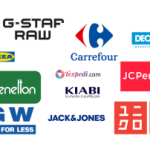Fabric cutting is one of the preparatory processes of garments manufacturing. It is done to separate different parts of a garment from the lays of fabrics according to pre-designed marker with various size ranges placed on the lay. After the cutting operation, the cut pieces are sorted out, numbered and bundled as per different sizes.
Manual Cutting
– Hand Scissors. |
Semi-Automatic Cutting – Straight knife of Cutting Machine.
– Band Knife Cutting Machine.
– Die Cutting Machine.
– Notcher Machine.
– Drill Machine. |
Computerised Cutting – Knife Cutting Machine.
– Water Jet Cutting Machine.
– Air jet Cutting Machine.
– Ultrasonic Cutting Machine.
– Plasma Torch cutting Machine. |
👉Advantages of the straight knife, round knife and band knife
1. Straight Knife |
* A large number of fabric lays can be cut by the machine due to high length of knife & rpm of the motor. So, productivity is high.
* Automatic grinding.
* Automatically lubrication.
* Comparatively cheap.
* Can be moved easily by a wheel.
* Suitable for straight-line & curve line.
* Can be cut high curve line than the round knife.
* Fabric can be cut from any angle. |
2. Round Knife |
* Suitable for cutting single-ply as well as multi-layer (say 20-30 layers).
* Easy to handle & operate.
* Suitable for small scale cutting.
* Suitable for gentle curve line cutting.
* To cut the larger part of the garments.
* With the same rpm, its efficiency is 10 times greater than the straight knife. |
3. Band Knife |
* Suitable for any types of line.
* Very large productivity for limited product
* Such as collars, cuff, placket etc.
* Automatic grinder grinds the knife instantly
* Air blower helps to reduce the fabric weight which increases the smooth movement of the fabric.
* Possible to cut 90֩ angle of the lay.
* The intensity of the accident is low. |
👉Drawbacks of water jets, laser beam cutting
Water-jet cutting |
Laser beam cutting |
1. Not suitable for higher depth of lay cutting;
2. Wet cut edges at the pattern;
3. Water spots may develop in the fabric;
4. Water needs filtration and de-ionisation treatment.
5. Lower plies of multi-layer fabric cutting may not have a sharp line.
6. Needs to control the sound of the water jet. |
1. High power consumption
2. Expensive
3. Carelessness in adjusting laser distance and temperature may lead to the burning of some materials.
4. Risk of accidents. |
👉Advantages of computerised cutting
- Reduce material costs.
- Reduce labour requirements and eliminate the need for skilled cutters.
- Accelerate the sewing process/productivity.
- Maximise valuable floor space.
- Integrated data sharing.
Texpedi.com
Check out these related articles:







